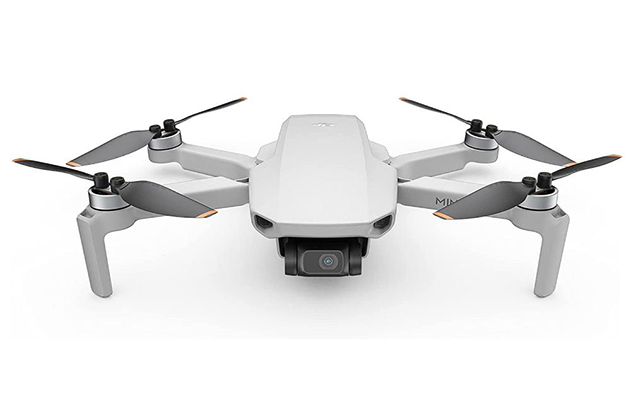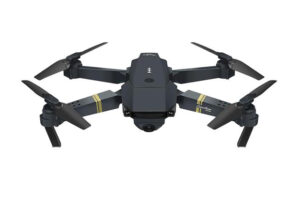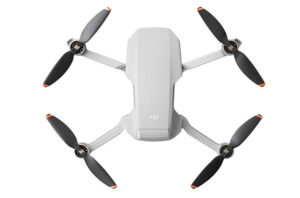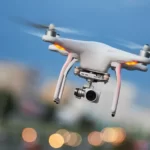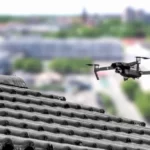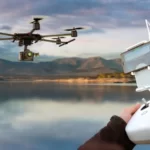The affordable entry point into the drone market is the DJI Mini SE. You will learn everything about the DJI Mini SE in this review.
The DJI Mini SE is advertised as being a good value drone, and it is. Beginners can get the majority of the features and a sizable portion of the flying power (in the exact same shell) for a significant discount when compared to the model level above, the Mini 2. With the exception of detail-obsessed and power users, there are some concerns about range and a small feature list, but the core functionality is present and powered by the same software as much more expensive drones, making this feel like an amazing value.
With numerous new models arriving on the market each day, the consumer drone market is crowded. The best drone model for you may seem impossible to choose if you are new to drones. Thank goodness for the DJI Mini SEries, which is ideal for beginners. We will go over all the information you require about the DJI Mini SE in this review. The DJI Mini SE is the ideal drone for beginners who want a lightweight, affordable, and simple to fly drone.
Table of Contents
DJI Mini SE Overview
The DJI Mini SE is a drone that has many of the same features as its predecessor, the DJI Mavic Mini, but in the Mini 2’s body. This means that you get all of the same fantastic features and capabilities that made the Mavic Mini so well-liked with the additional advantage of the drone being a little bit more wind-resistant.
The DJI Mini SE is slightly taller than the Mavic Mini and weighs less than 250g. Its folded dimensions are 245x289x56mm. It is lightweight and portable, making it a great drone for traveling.
As the drone weighs less than 250g, you will not need to register it with the FAA, however, you will still need to take the new FAA TRUST exam. This test verifies that you are completely knowledgeable of all the safety and legal requirements pertaining to flying drones. It is intended for people who fly drones for recreational purposes.
The drone has dual GNSS receivers that enable it to connect to the GPS and GLONASS satellite systems, as well as infrared and optical flow sensors on its belly.
A 3-axis gimbal stabilizes the HD camera, and a micro SD card slot on the back supports cards up to 256GB in size. DJI suggests SD cards with a UHS-I speed class 3 or higher.
It has a 2S lithium-polymer battery that powers it and gives it roughly 30 minutes of flight time, though you usually get a little less than that. Even so, it was an excellent flight, especially for a drone under $300.
The back of the aircraft has a few LED lights that help with troubleshooting and serve as status indicators for the aircraft.
Key Features
- 1/2.3-inch sensor with 24mm lens, fixed f/2.8 aperture & 83°FOV
- 12MP images
- Records videos in 2.7k at 30fps 1080p at 60fps
- 40Mbps Video bitrate
- 4 Quickshots
- Automatic return to home
- 30 minutes of flight time
- 4km transmission range
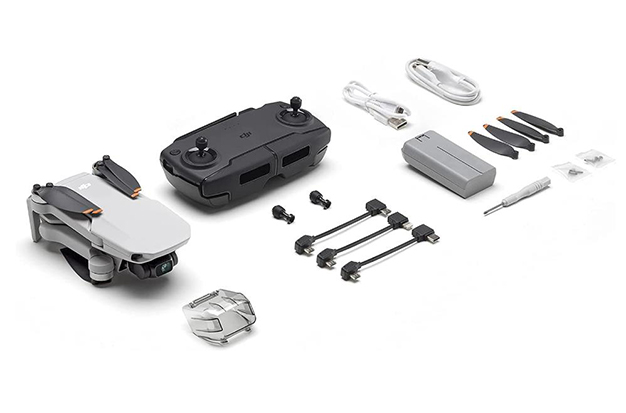
Pros
- A powerful tool for a very good price
- Video and photos are richly
- DJI Fly has good usability
- Can be flown without phone/app
- Manual shutter speed / ISO available
- Four stylish Quickshots
Cons
- 2.7K resolution is lower than many phones
- No collision sensors
- Lacks pilot-assist follow functions
- JPEG-only images; no Raw.
- Struggles in high winds
- Range could be better
Posts Recommended:
DJI Mini SE – Design And Controller
There is a reason why the controller resembles the retired Mavic Mini while the aircraft design is almost identical to the DJI Mini 2. The Mini SE uses almost identical parts and encases them in the more sophisticated Mini 2 moulding (which stands for the middle tier ultra-light in the DJI range). A key component of the electronics is the radio system, which was upgraded for the Mini 2 to offer a longer range and come with a newer controller design.
The Mini SE’s controller might not have the newest technology, but it outperforms its successors in terms of size and weight by folding down to a small size. The bottom-emerging phone grips can still hold the newest large smartphones (we tested it with the iPhone 13 Pro Max). The 2,600mAh battery can be charged through the Micro-USB port on the left, which also doubles as a phone charging port when one of the perfect supplied connectors is used (no dangling cables here). Strangely, while the controller on an Android phone drains a charge and lasts just under two hours, it can last up to 4.5 hours on an iPhone.
The sticks must be unscrewed and tucked into clips under the phone grips when the controller is folded up for packing. The antenna also folds down during this process. The sticks feel fine despite being made of hard plastic rather than metallic like other DJI products. The constant worry of losing them outweighs the controller’s portability.
The Mini SE folds down to about the size of a large phone and has a slightly more angular airframe than the new bug-eyed Mini 3 Pro. It is considerably smaller than the Mini 3 Pro, whose open diagonal measures 247mm, at 213mm. It can fly for up to 30 minutes, but in practice, that meant being warned to land a little more than 20 minutes after takeoff while engaging in some fairly active flying, which is comparable to more expensive drones.
For use during flight, a plastic lens cap covering the camera’s gimbal stabilizer must be removed. The front arms’ legs give the gimbal just enough space above the ground when it’s placed on a flat surface; this is a common styling found on many DJI drones, but it’s still helpful to have a landing pad.
A USB-C socket and a MicroSD card slot are located at the back of the drone, which can also be used to charge the drone’s batteries if you don’t have a charging hub. You must provide a memory device because there is none built into the system.
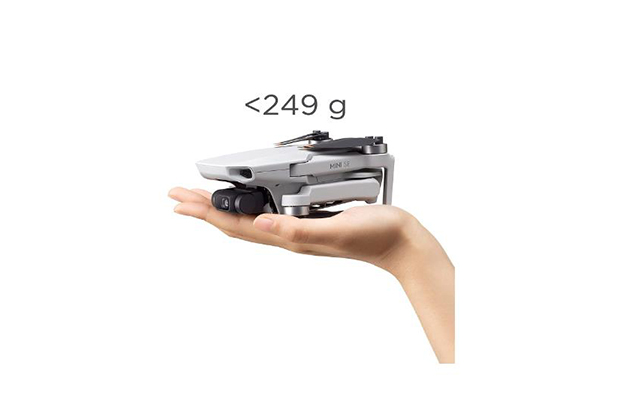
DJI Mini SE – Flight Features
Three flight modes are available for the Mini SE: Position, Sport, and CineSmooth.
The only significant difference between the Position and CineSmooth flight modes is the maximum speed; in Position mode, this is 17.8 mph, while in CineSmooth, it is only 8.9 mph.
The maximum speed in the sports mode is around 29 mph, and the controls are more sensitive.
Whenever the vision sensors are turned off and GPS signal is poor or unavailable, the ATTI mode is activated. Only skilled drone operators should fly the drone in this mode because it is difficult to control.
The drone has an automatic return to home feature that can be manually engaged using the controller or app, and it is automatically triggered whenever the drone is out of range or its battery is running low.
This drone’s Quickshot mode, which can be accessed through the DJI Fly app, is a cool intelligent feature.
By using this mode, you can independently produce a variety of short HD videos from various angles.
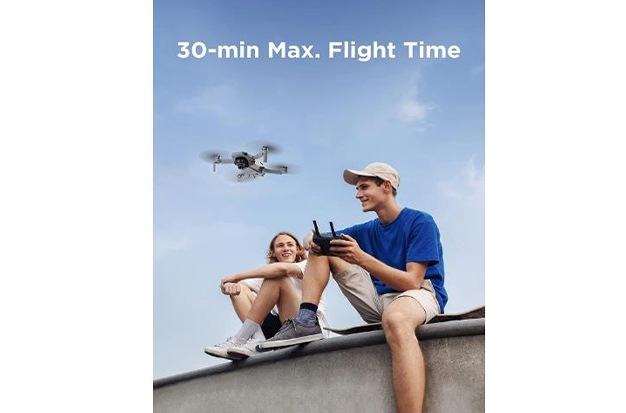
DJI Mini SE – Photos
In part because there aren’t many options, taking pictures with the Mini SE is simple. The camera can be pointed in any direction between directly down and directly forward; on an extended setting, it can even tilt up 20 degrees.
The camera has a 12 megapixel 1 / 2.3″ CMOS sensor with an 83 mm field of view (24mm EFL). Only the ISO ranges from 100 to 3,200, and the electronic shutter has a range of 4 to 1/8000 seconds. The latter is essentially a crop since stills can be taken in either 4:3 or 16:9 aspect ratios at a width of 4000 pixels.
Photos can be taken as single shots or in an interval mode (with options ranging from 2 to 60 seconds), which can then be manually put together to create a timelapse. Photos can also be taken continuously using software in case flying becomes distracting.
There aren’t many options, which simplifies operation. However, users have the choice to switch from Auto to Manual, releasing on-screen dials to regulate shutter speed and ISO. Additionally, the menus provide a live histogram (drag to position as desired) and over-exposure “blinkies” to assist. It’s a good idea because it served as a reminder to override the Auto mode, which can occasionally be lax about exposure. Other than that, the images and video are on par with a good phone; they are neither overly sharpened nor underexposed. Like other DJI drones, the colors appear natural and may even have a slight hint of extra saturation, just enough to make the grass and trees look good.
Read More: Best Drones For Night Photography
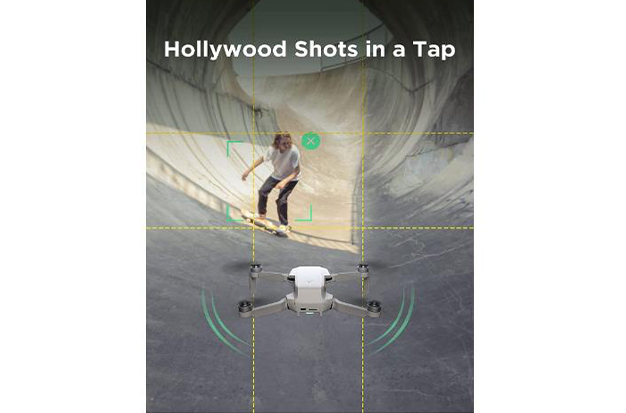
DJI Mini SE – Video
Either 2.7K (30 frames per second; 2720 x 1530 pixels) or 1080p (60 frames per second) video can be recorded. This is better than you might anticipate for a low-resolution “economy” option. The bitrate is 40Mbps, which is also a little lower than average, especially since H.264, not H.265, is the only compression algorithm available.
The videos, which are below-par in terms of quality, inevitably show all of this; noise is particularly noticeable in the shadowy areas. However, the bitrate is sufficient and the detail is discernible to produce video that isn’t inferior to some of the 4K we’ve seen. Even with manual settings, it can be difficult to capture detail in both the shadows and the highlights on a sunny day. Although the video has noticeable grain in low light and is clearly a daytime device (although many aviation authorities make this a rule regardless), a little soft cloud can make things a little easier.
Is DJI Mini SE Able To Follow You?
The DJI Mini SE cannot follow you with the DJI Fly app, unlike the other drones in the Mini series.
There is an app that will give you access to follow me mode and other well-liked intelligent flight modes like point of interest and waypoint, though, if those are features you really want.
The app is called Litchi and it is very popular with Pilots of DJI drones should consider using it instead of the DJI Fly app because it gives you access to the follow me mode for the DJI Mini SE.
There is a cost associated with this app; on the App Store, it is $22.99, and on the Google Play Store, it is $24.99. It is compatible with both iOS and Android devices.
DJI Mini SE Review: Is It Worth Buying?
The Mini SE doesn’t perform many tasks compared to the best drones, but it does them well. Pictures and video taken from the air are very shareable, will suffice for many situations, and look good even without professional editing.
The flying experience was safe and reliable in our opinion, and we valued the bottom sensors’ ability to prevent violent crashes into the ground while also enabling indoor use without drift (outdoor GPS aids in this).
Even though DJI Fly defaults to lower resolutions in each mode, we didn’t like how it requested our email and tried to sell us an extended warranty during our first flight. The fact that you can position the histogram above the on-screen return-to-home option is also a little strange. The app is otherwise well-designed and simple to use (though obviously not strictly required).
The range is the weak point instead of camera choices. We discovered that the signal’s limit was at about 250m (820ft). Although it becomes difficult to see with the naked eye at this point, this is the sensible way to fly a drone this size.
What’s amazing here is that we get a full Fly More kit with three batteries for less than the 4K Mini 2 with one battery. If the limitations bother you, DJI has plenty of more expensive options available. That seems like a good deal.
Conclusion
A fantastic little drone with the same features as its predecessor but a much lower price is the DJI Mini SE. It is the best drone in its price range, and I highly recommend it, if you want some alternatives, then click on the button below for the best drones under $200.
Read Next:
